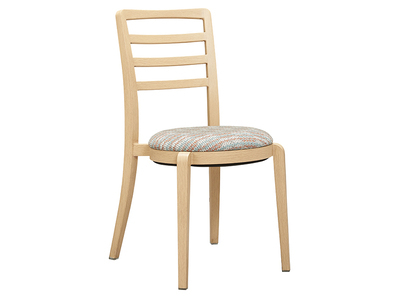How to Choose Commercial Restaurant Furniture?
Oct. 10, 2025
Choosing the right commercial restaurant furniture is a crucial decision for any food service establishment. The furniture you select not only affects your restaurant’s aesthetic but also plays a major role in customer comfort, operational efficiency, and long-term durability. From chairs and tables to booths and bar stools, every piece contributes to the overall dining experience. This comprehensive guide will help you make informed decisions while optimizing your space and investment.
1. Understand Your Restaurant’s Concept and Brand
Before purchasing any furniture, it’s essential to define your restaurant’s concept. Whether you operate a fine dining restaurant, a casual cafe, or a fast-food outlet, your furniture should complement your brand identity.
Fine dining: Opt for elegant, plush seating with high-quality materials like leather or solid wood.
Casual dining: Choose functional yet stylish options such as wooden tables with cushioned chairs.
Fast food: Focus on durable, easy-to-clean furniture that can withstand heavy use.
Remember, your furniture is part of your restaurant’s first impression and communicates your style, comfort level, and target audience.
2. Prioritize Durability and Material Quality
Durability is non-negotiable for commercial furniture. High-traffic restaurants require furniture that can withstand daily wear and tear without compromising style. Common materials include:
Wood: Offers a classic, timeless look. Solid hardwoods like oak and maple are durable and can be refinished.
Metal: Provides strength and modern aesthetics. Ideal for industrial-style or outdoor settings.
Plastic/Polypropylene: Lightweight, affordable, and easy to clean. Best for cafes or quick-service restaurants.
Upholstery: Leather or faux leather adds comfort and sophistication. Ensure it’s stain-resistant for practicality.
Tip: Test the weight capacity of chairs and tables to ensure they can handle heavy usage.
3. Consider Comfort and Ergonomics
Customer comfort directly affects dining duration and satisfaction. Uncomfortable furniture can reduce repeat business. Key considerations include:
Seat height and depth: Chairs should support proper posture.
Backrest angle: Provides comfort without slouching.
Table height: Should allow for easy dining, typically 28–30 inches for standard tables.
Ergonomically designed furniture keeps customers relaxed and encourages longer visits, which can boost revenue.
4. Maximize Space Efficiency
Optimizing your restaurant layout is essential to accommodate more guests without feeling cramped. Consider:
Flexible seating: Stackable chairs, folding tables, or modular booths allow easy reconfiguration.
Spacing: Maintain at least 18–24 inches between chairs and 30–36 inches between tables.
Multi-purpose furniture: Bar-height tables or communal tables maximize seating in limited spaces.
Proper planning ensures a smooth flow for both customers and staff, improving overall efficiency.
5. Focus on Easy Maintenance
Restaurant furniture needs to withstand spills, stains, and constant cleaning. Prioritize materials that are low-maintenance:
Vinyl or faux leather upholstery: Wipeable and resistant to stains.
Powder-coated metal frames: Durable and resistant to rust.
Laminated or sealed wood: Prevents water damage and scratches.
The easier it is to maintain, the longer your furniture will last, saving money on replacements.
6. Match Furniture to Your Lighting and Décor
Furniture should complement your interior design and lighting:
Color palette: Choose colors that harmonize with walls, flooring, and décor. Neutral tones are versatile, while bold colors can create focal points.
Material finishes: Glossy, matte, or textured finishes impact the visual feel.
Lighting effects: Furniture materials reflect light differently. For instance, metal surfaces add shine, while wood absorbs light for a warm ambiance.
A cohesive design enhances the dining experience and encourages social media-worthy moments.
7. Budgeting Smartly for Furniture Investment
Investing in commercial restaurant furniture doesn’t mean overspending. Consider:
Quality vs. cost: Cheaper furniture may save money initially but could increase long-term replacement costs.
Bulk discounts: Buying in sets or bulk often reduces per-unit cost.
Maintenance cost: Factor in cleaning supplies or protective treatments.
Create a budget that balances style, durability, and practicality.
8. Safety and Compliance Considerations
Restaurant furniture must meet safety and regulatory standards:
Stability: Chairs and tables should not tip easily.
Fire safety: Upholstery materials should meet fire-resistant standards.
Accessibility: Ensure ADA compliance with adequate space for wheelchairs and accessible seating.
Safety-conscious furniture protects customers and reduces liability risks.
9. Outdoor Furniture Selection
If your restaurant has a patio or rooftop, outdoor furniture requires weather-resistant materials:
Aluminum or stainless steel: Rust-proof and lightweight.
Synthetic wicker: Resists fading and water damage.
UV-resistant fabrics: Prevent fading under sunlight.
Proper outdoor furniture extends usability and maintains appearance even under harsh weather conditions.
10. Customization and Branding Opportunities
Custom furniture adds a unique touch and reinforces brand identity:
Engraved logos: On chair backs or tabletops.
Branded color schemes: Matching upholstery or table accents with your brand colors.
Tailored layouts: Fit your space and concept perfectly.
Customized furniture creates memorable experiences and can differentiate your restaurant from competitors.
11. Evaluate Supplier Reputation and Warranty
Choosing a reputable supplier ensures quality, reliability, and after-sales support:
Check for reviews and testimonials from other restaurants.
Verify material quality and certifications.
Ensure warranty coverage for manufacturing defects or wear-and-tear.
Reliable suppliers reduce the risk of delays, defective products, and unexpected costs.
12. Sustainability Considerations
Eco-conscious consumers are increasingly attracted to sustainable restaurants:
Recycled or reclaimed wood furniture: Environmentally friendly and stylish.
Low-VOC finishes: Reduce harmful chemical exposure.
Durable materials: Minimize waste by reducing replacements.
Sustainable furniture aligns with modern values and can enhance your restaurant’s reputation.
Conclusion
Choosing the right commercial restaurant furniture requires a thoughtful approach that balances style, comfort, durability, and practicality. By considering factors such as restaurant concept, material quality, customer comfort, space optimization, and sustainability, you can create a dining environment that delights customers while standing the test of time. Investing in quality furniture not only enhances the aesthetic appeal but also contributes to operational efficiency, customer satisfaction, and ultimately, long-term profitability.
For more details please contact Yumeya Furniture
45
0
0
Previous: None
Next: None



Comments
All Comments (0)